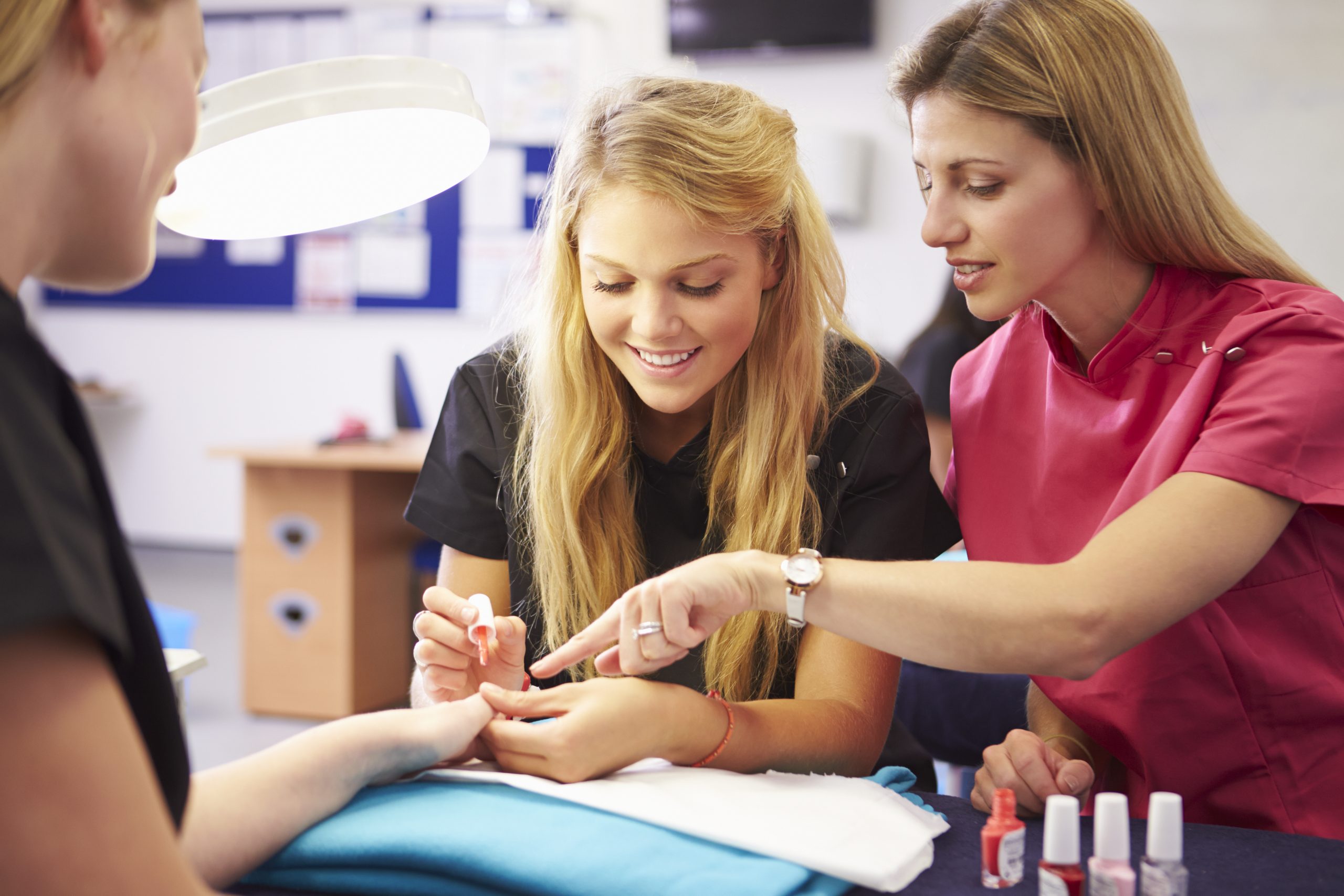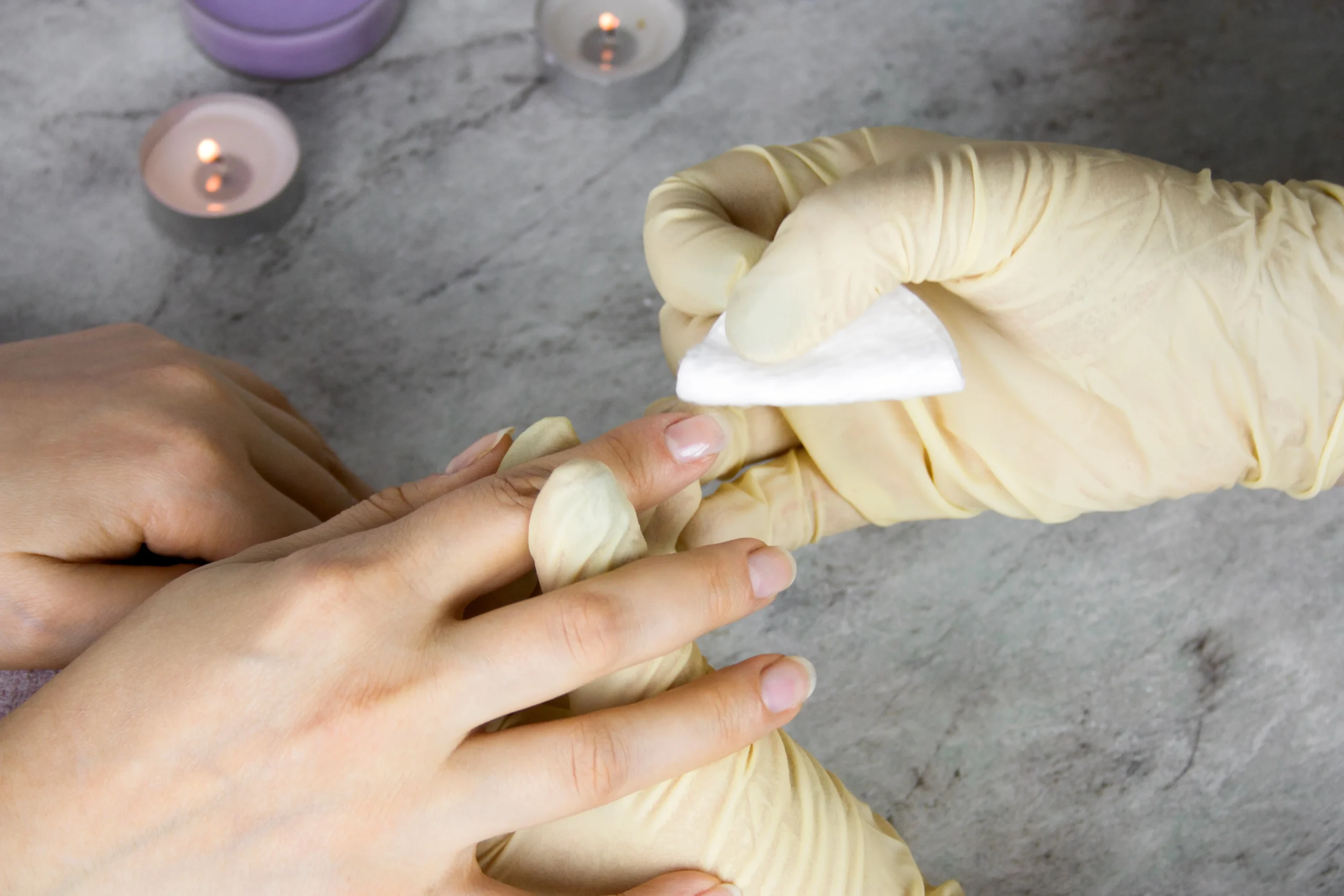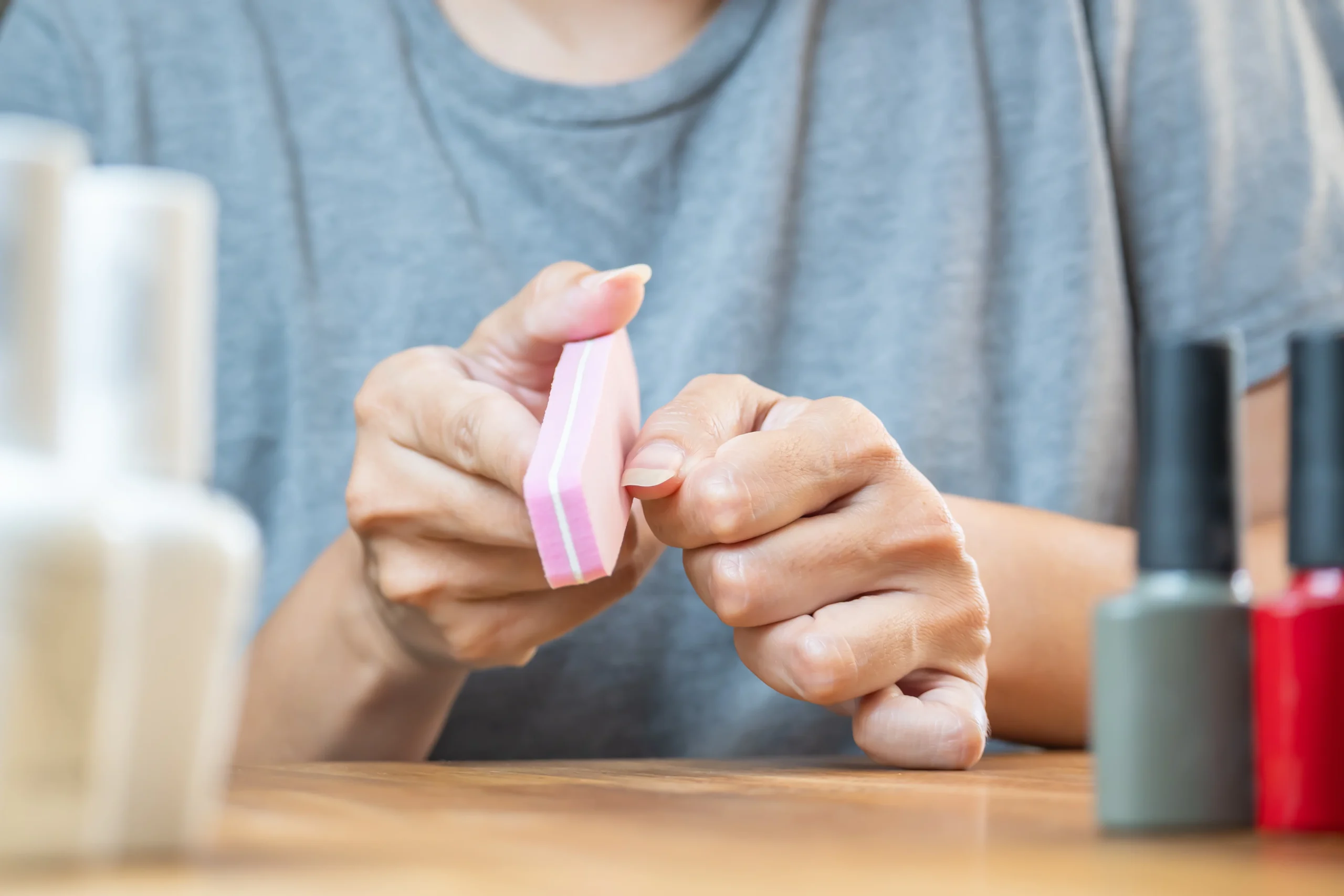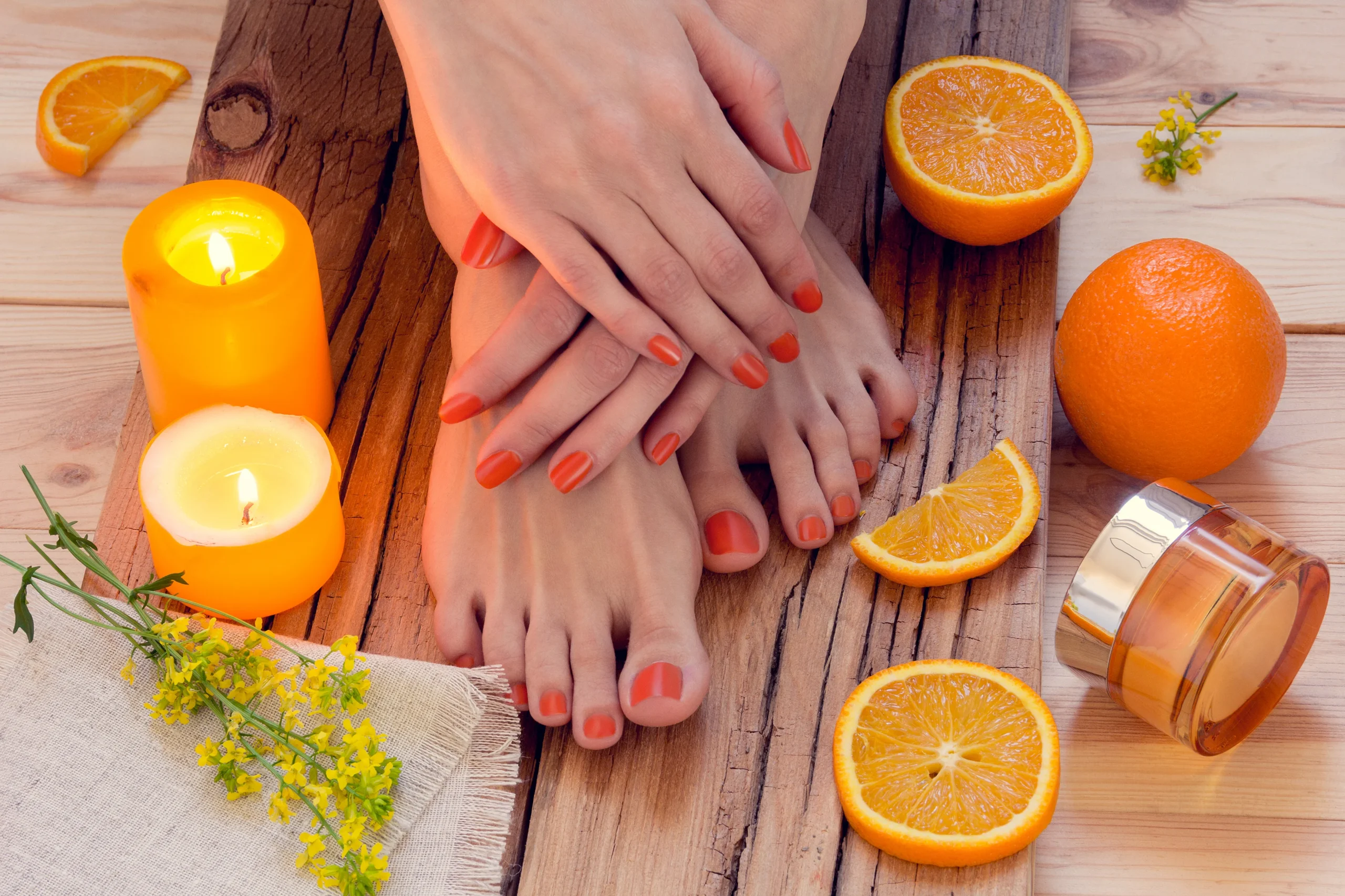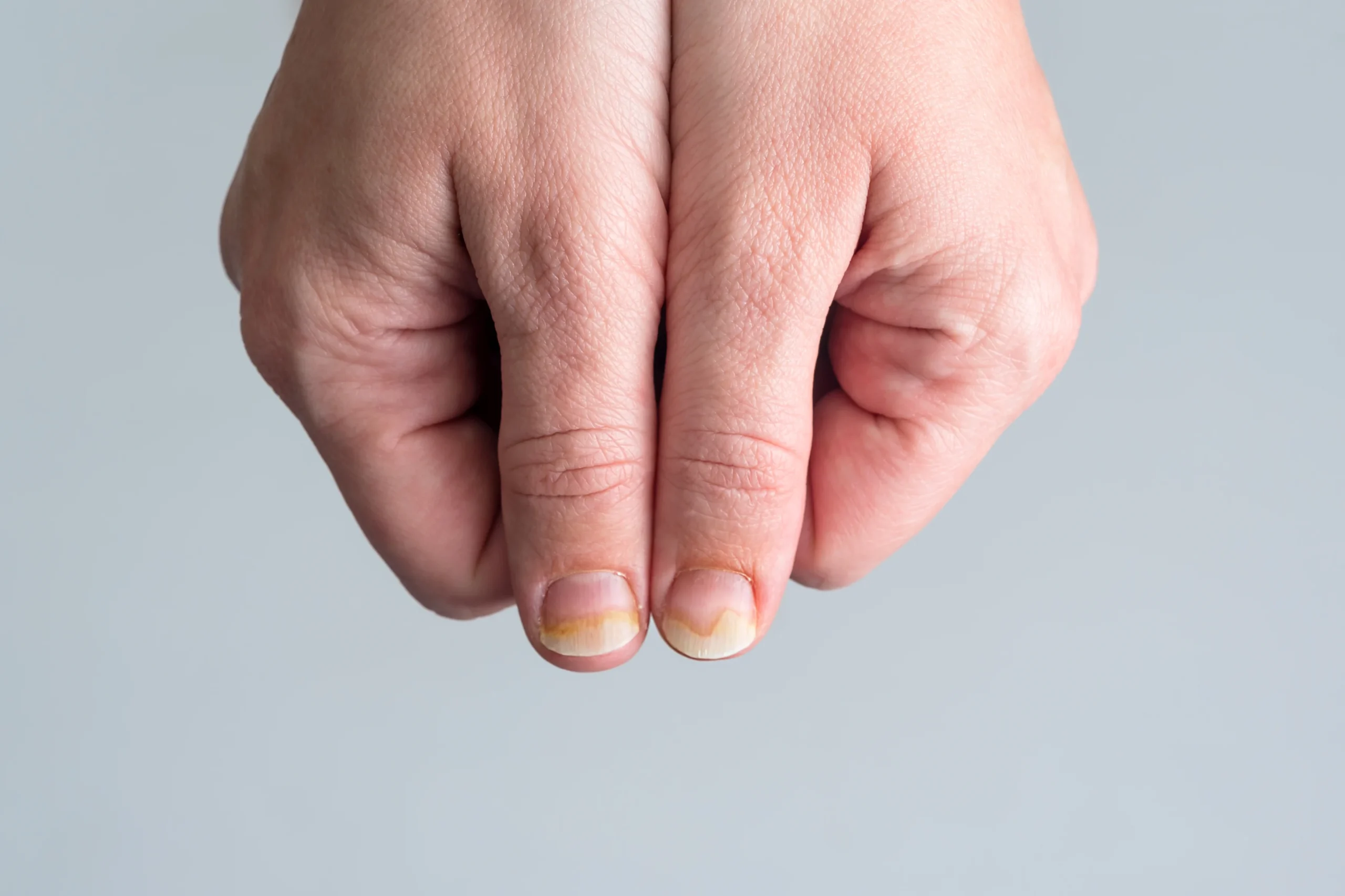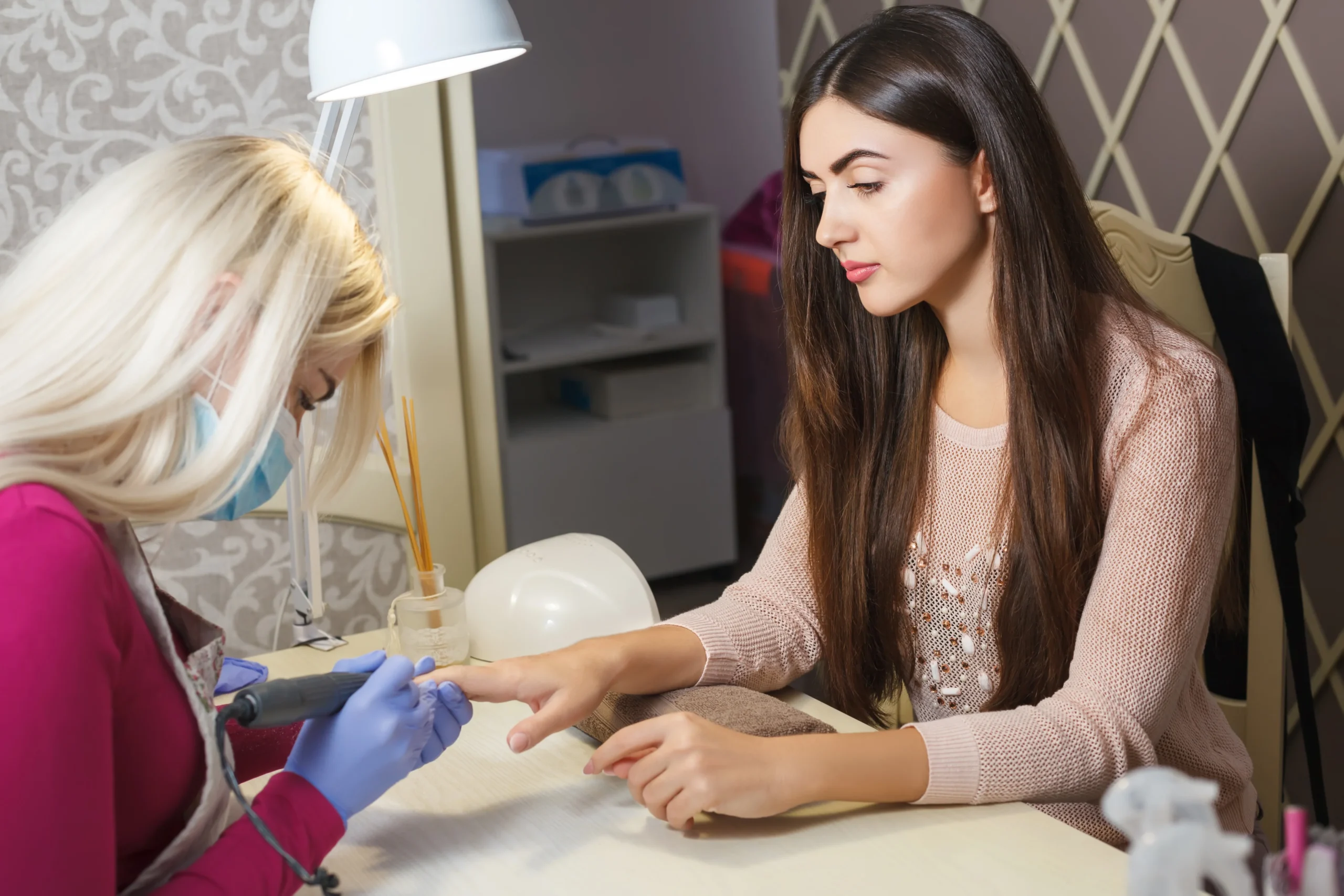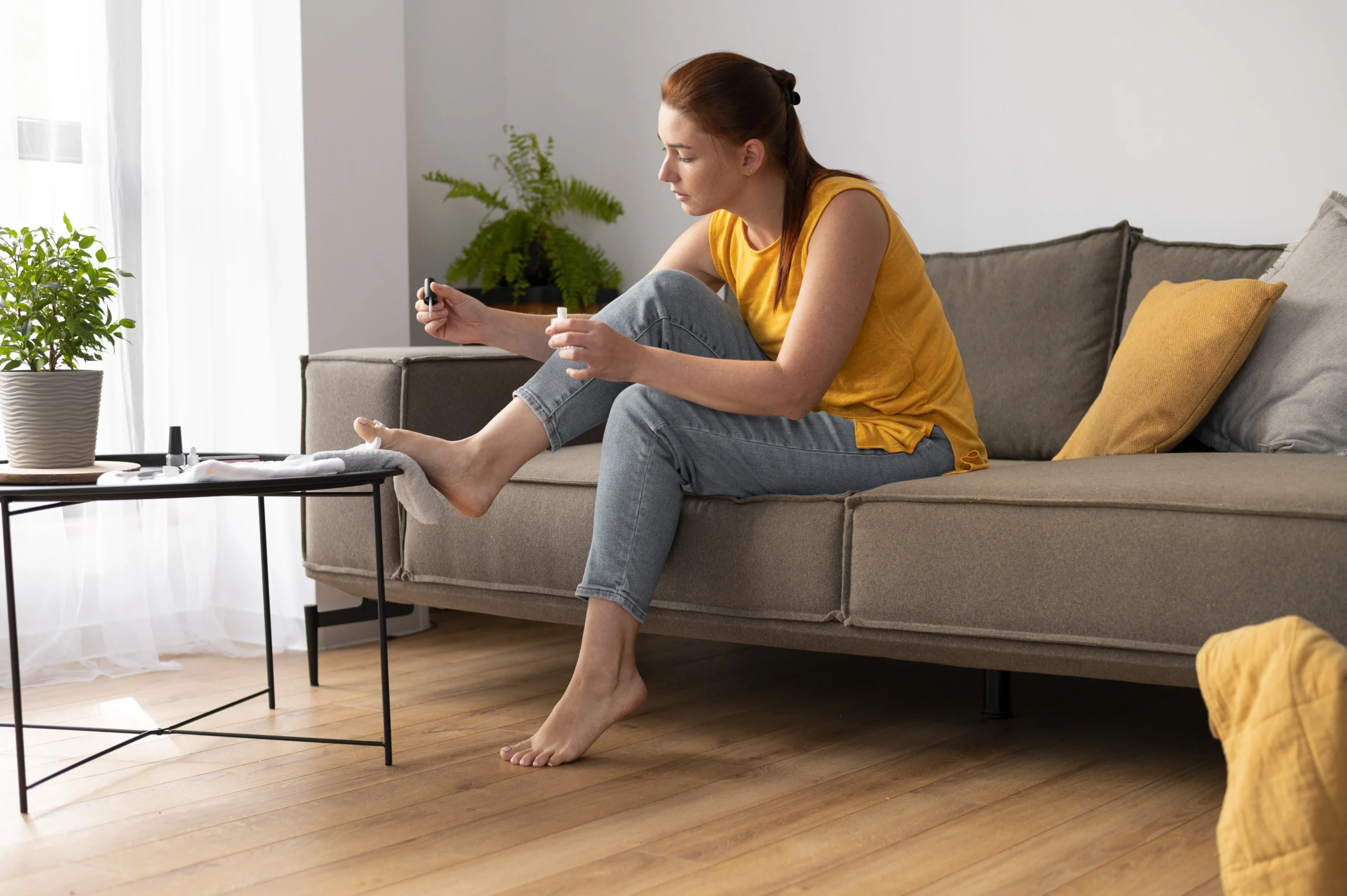Understanding What Is a Pedicure and Manicure?
What is a pedicure and manicure? They’re not just cosmetic procedures-they’re a way to live a healthy and confident life. While these beauty rituals are part of a once-a-month routine for many, their benefits aren’t limited to outer beauty. Manicure is the therapeutic and aesthetic care of the hands and nails. At the same time, a pedicure is the equivalent of the feet and toenails. Together, theory is a form of personal care that improves physical appearance and mental well-being. As the value of caring increases among people, the popularity of these treatments is growing worldwide.
Although commonly associated with luxury and comfort, pedicures and manicures have been practiced for centuries in various cultures for health, cleanliness, and social status. In today’s fast-paced world, taking care of yourself is not a luxury; it’s a necessity. Hands and feet are the most used parts of our bodies, exposed to constant use, environmental damage, and germs. These regular treatments help prevent nail problems, soften the skin, and improve blood circulation, helping you look neat and professional.
Moreover, the practice of getting pedicures and manicures also provides mental peace. The peaceful atmosphere of the salon, aromatic oils, and gentle massage techniques help the experience reduce stress and increase mental clarity. In today’s digital age, where constant use of hands is required, keeping your hands and feet healthy is essential. That’s why health experts and dermatologists often recommend these treatments for beauty and medical reasons.
As we delve deeper into this topic, you’ll discover why manicures and pedicures aren’t just beauty treatments. You’ll learn the scientific reasons behind them, their powerful health benefits, and how to do them right at home. Suppose you’re new to nail care or want to improve your routine. In that case, understanding what pedicures and manicures are is the first step to caring for yourself.
The Origin of Pedicure and Manicure
What are pedicures and manicures? The answer becomes even more interesting when we look at their historical roots. These treatments aren’t just modern luxuries-they’re part of a beauty culture that dates back thousands of years. Nail care symbolized status, wealth, and cleanliness in ancient Egypt, China, and India.
In ancient Egypt, around 2300 BC, princesses like Cleopatra and Neferiti used henna to paint their nails. The color of someone’s nails was used to distinguish social class. The upper classes used dark and rich colors, while the lower classes were limited to lighter shades. This was not just for beauty but also a symbol of power and sophistication.
Meanwhile, in ancient China, royal family members painted their nails with beeswax, egg whites, and flower petals. Long, manicured nails symbolized nobility and freedom from manual labor.
India also has a long tradition of hand and foot care. The ancient practice of ayurveda included oiling and cleansing the hands and feet, which was considered essential for physical and spiritual health. These methods are the predecessors of the massage and exfoliation of modern pedicures and manicures. Over time, these traditions became more sophisticated and spread worldwide through trade, conquest, and cultural exchange.
The modern manicure and pedicure industry took shape in the 20th century, especially during the rise of Hollywood glamour in the 1920s and 30s. Red-polished nails became a fashion statement inspired by style icons. Nail care has become more accessible to the general public through the development of nail polish and professional equipment. Today, the industry is a billion-dollar market and constantly evolves with new trends, technology, and health-focused developments.
So, the answer to the question, “What is a pedicure and manicure?” spans thousands of years and highlights a rich tradition of beauty, culture, and self-care. These practices have survived the ravages of time to enhance beauty because they are part of a tradition of healing, identity, and self-respect.
Modern Nail Care Techniques
What is a pedicure and manicure without a touch of modern innovation? Today’s nail care routines are not limited to traditional nail shaping or polishing. Advances in equipment, products, and technology have transformed nail care. Modern pedicures and manicures are now a sophisticated blend of Hygiene, artistry, and personal care tailored to each individual’s taste and health needs.
For example, gel and acrylic nail technology have changed the concept of a long-lasting manicure. While regular nail polish wears off in a few days, gel manicures can last up to three weeks without visible fading. Acrylic extensions have also allowed people with weak nails to enjoy the beauty of long and attractive fingers. With this technology, nail technicians can now create intricate nail designs, crystal placement, and color layering that were once unimaginable.
In addition, electric nail files, LED curing lamps, and cuticle softeners have increased the quality and speed of pedicures and manicures. Modern salons now offer waterless manicures and pedicures, which are done without water and reduce the risk of infection. This method saves time and water and aligns with environmentally friendly practices in the beauty industry.
Hygiene has also improved significantly. Autoclaving equipment, single-use buffers, and disposable liners are now standard practice in many professional salons. These steps protect clients from fungal infection or skin irritation and provide peace of mind during care.
Another significant development is the rise of “nail wellness.” This concept includes using natural and organic ingredients, such as vitamin-rich oils, cruelty-free polishes, and materials free of harmful chemicals (such as formaldehyde and toluene). People are much more aware of what they put on their nails, and many are now choosing healthier and more environmentally friendly alternatives.
In short, the answer to the question, “What is a pedicure and manicure?” is today a meeting point of aesthetic art and modern care. Whether you want flashy nail art or a simple, natural look, modern techniques will give you a safe, effective, and enjoyable experience that’s also compatible with the health of your nails and skin.
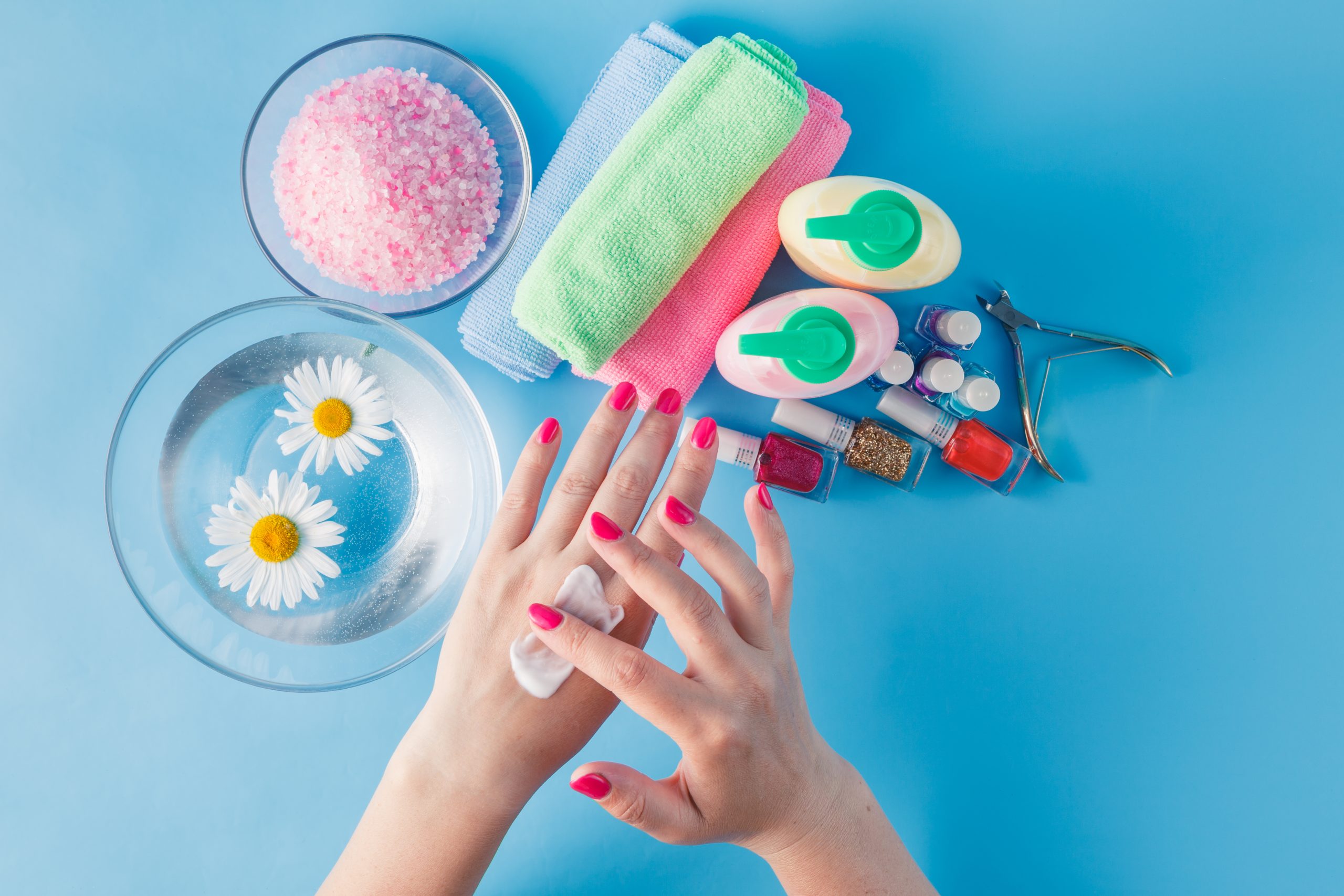
What Happens During a Pedicure and Manicure Session?
What does the pedicure and manicure experience feel like when you sit in the salon chair? It may seem like a luxurious ritual to those experiencing it for the first time, but behind this comfort and care lies a well-organized process. A typical session isn’t just about painting your nails-it’s a step-by-step rejuvenation process for your hands and feet, leaving you looking neat, refreshed, and more confident.
Typically, the session begins with a warm welcome and consultation. The nail technician will ask you what type of service you want—a simple clean-up or interesting nail art. Based on your answers, they will suggest services that suit your needs. Hygiene is the priority, so the equipment is disinfected, and the nail preparation begins.
In a manicure, your hands are soaked in warm water or cleansed with a cleanser to soften the skin and cuticles. A pedicure is similar in process, but uses a soothing foot soak infused with salt, essential oils, or antibacterial ingredients to soak your feet.
Once the skin and cuticles are soft, the cuticles are gently pushed back and trimmed. Dead skin and hangnails are removed to make the nails look healthy and clean. The nails are then shaped round, square, or almond-shaped, depending on your preference. Next comes the exfoliation step, where dead skin is removed using a scrub rich in sugar grains, sea salt, or fruit enzymes. This step leaves your hands and feet soft and smooth.
The most relaxing part of the session is the massage, which uses a thick moisturizer, oil, or lotion. This massage improves blood circulation, reduces stress, and works on specific pressure points on the hands and feet. Some salons also use comforting elements like hot stones or paraffin wax dips.
The final step is nail polish or nail enhancement. If you want regular nail polish, a base coat, two layers of color, and a top coat are applied. If you choose gel or acrylic, each layer is hardened using a special light to make it last longer. This step takes your nails from a completely plain state to a bright and attractive one, according to your taste.
Overall, the answer to the question, “What is a pedicure and manicure session like?” is that it is not just a beauty treatment. It is a complete experience that cares for your physical and mental health. Each step of cleansing, exfoliating, Moisturizing, and polishing gives you a change you can see and feel.
Tools and Products Used for Pedicure and Manicure
What is a pedicure and manicure without the right tools and products? The quality and results of your experience largely depend on the items used during the session. In today’s nail care industry, various specialized equipment and cosmetic products are on the market that emphasize health, cleanliness, and beauty. Knowing these essentials can ensure good results and safe use, whether you go to a professional salon or do it at home.
Basic tools used to shape, smooth, and clean the nails are at the heart of every pedicure and manicure. Nail clippers trim excess length, and then an emery board or glass nail file shapes and smooths the edges of the nails. Cuticle care involves gently pushing back the skin with a stainless steel cuticle pusher and removing dead or excess tissue with small nippers. These tools should be sterilized before each use to prevent the spread of bacterial or fungal infections.
Foot files, pumice stones, and scrubbing brushes are essential for exfoliation. They remove calluses and dead skin, especially from the heels and balls of the feet. Exfoliating scrubs, which are usually made with sugar, salt, or fruit enzymes, enhance this step to reveal soft, radiant skin. After exfoliation, the surface of the nails is smoothed with a nail buffer to prepare them for polish or other treatments.
Modern manicures and pedicures use a variety of lotions, oils, and creams, often containing vitamin E, jojoba oil, shea butter, or aloe vera, which nourish the skin and nails. Massage oil softens the skin and relaxes it by increasing blood circulation. Good quality salons use paraben-free and cruelty-free products, which are gentle on the skin and environmentally friendly.
A variety of products are used for nail enhancement and color. A base coat protects the nail and makes the polish last longer. Nail polish in various colors, finishes, and formulas is applied in layers, with a clear top coat sealing the look. Gel and shellac polishes are dried using UV or LED lamps, which increases durability. Acrylic systems use powder and liquid to create artificial nails, popular for those who want to make their nails longer and stronger.
Sanitizers, disinfectant sprays, and disposable items such as toe separators, nail wipes, and gloves are now standard practice in most salons for safety and Hygiene.
So, the practical meaning of the question” What is a pedicure and manicure?” is a combination of selected tools and products designed to care for and protect the hands and feet. Using the right tools and formulas not only enhances a safe, clean, and satisfying experience every time.
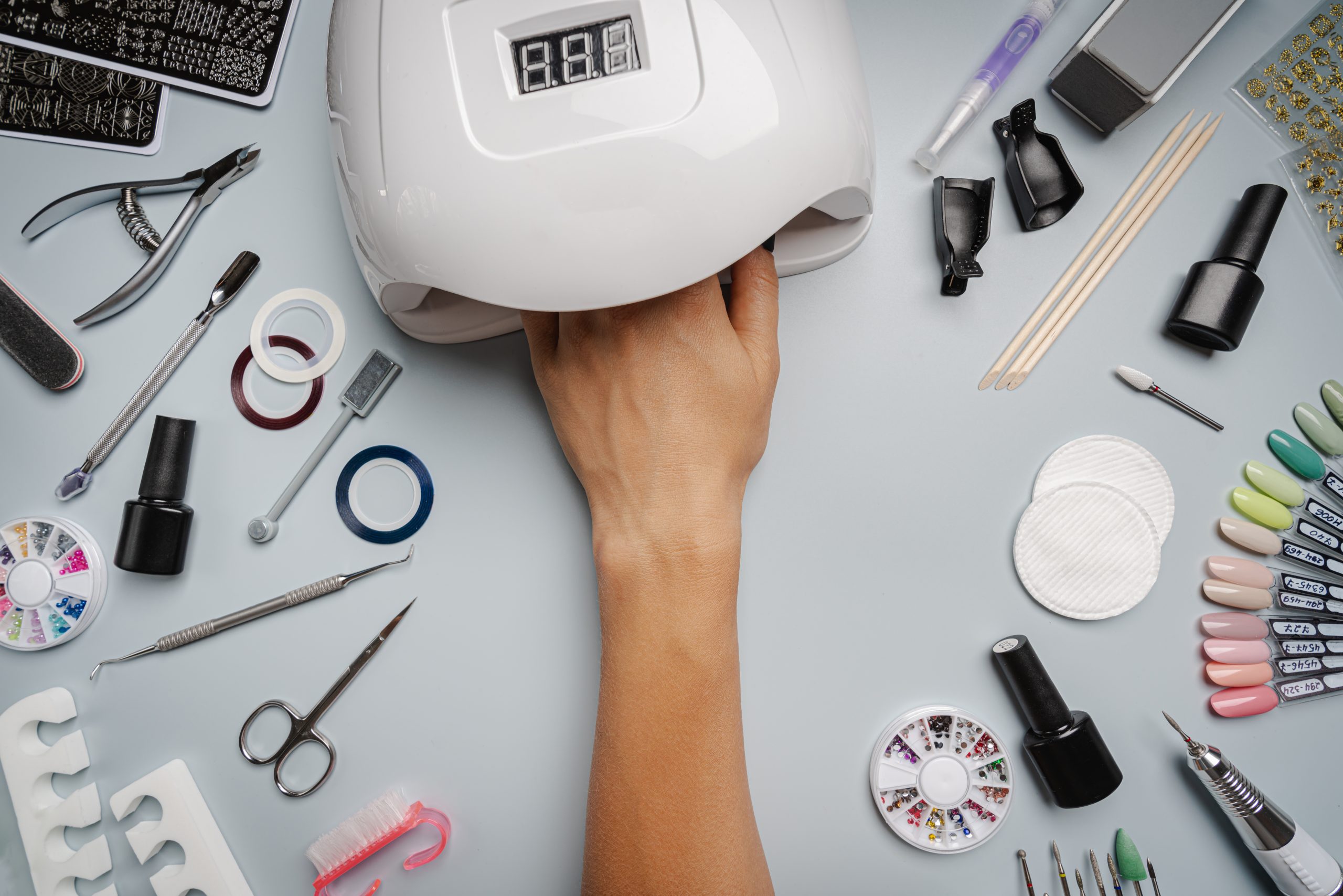
Step-by-Step Process of Pedicure and Manicure: A Complete Guide
When we break down how pedicures and manicures work step by step, it becomes clear that this process is essential for the beauty and care of the hands and feet. Whether done at home or in a salon, this routine is based on cleansing, grooming, beautification, and rest.
Preparation and Cleaning
The first step is to clean your hands or feet. Wash them with lukewarm water to remove dirt, sweat, and skin residue. Professional salons usually use an antibacterial soak with warm water and essential oils or Epsom salts. This softens the skin and nails, making the next steps easier. A similar soak can be done in a small basin or bucket at home.
Cuticle Care and Nail Trimming
Immediately after cleansing, the cuticle care step comes. A special cuticle oil or cream is applied to the cuticle and left for a while to soften it. Then, it is gently pushed back with a cuticle pusher. If there is excess cuticle or hangnail, it is carefully cut off with sterilized nippers. The nails are then trimmed and shaped with a file to the desired length. This helps the nails look beautiful and reduces the risk of breakage.
Exfoliation or Scrubbing The Skin
After shaping the nails, dead skin cells are removed through exfoliation. This is especially important during a pedicure, as it removes the thick skin or calluses that have accumulated on the soles of the feet. You use a foot scrub or pumice stone for foot care. A manicure uses a light scrub on the fingers and knuckles to soften and smooth skin.
Moisturize and Massage
After exfoliation, the hands and feet are thoroughly massaged using moisturizer, oil, or serum. This increases blood circulation, relaxes muscles, and keeps the skin moisturized. Advanced treatments may also include a paraffin wax dip or hot stone therapy.
Nail Polish and Finishing Touches
The last step is nail painting and finishing touches. First, excess oil or cream is removed from the nails so the nail polish adheres well. Then, a base coat, 1-2 coats of the desired color, and a top coat are applied. Each layer is cured under a UV or LED lamp if gel polish is used. If desired, one can also use French tips, nail art, or a clear coat.
7 Powerful Benefits of Regular Pedicures and Manicures
Pedicures and manicures are not just about beauty-they are a well-planned commitment to self-care. Regular nail care enhances external beauty and is a powerful, health-conscious habit that positively impacts the body and mind. In addition to beautiful nails and soft skin, it has long-term benefits, such as forming healthy habits, improved Hygiene, and peace of mind.
Here are seven excellent benefits of getting regular pedicures and manicures:
1. Improved nail health
Regular manicures and pedicures prevent common problems like fungal infections, ingrown toenails, and brittle nails. Professional cleaning and trimming remove dirt and debris from under the nails and cuticles, which reduces the risk of bacteria. Also, keeping the nails in shape minimizes the tendency to break.
2. Soft Skin and Callus Removal
Hands and feet endure a lot of stress in daily life. During a pedicure, dead cells are removed from the skin of the feet. During a manicure, roughness is removed from the hands, and softness is restored. This keeps the skin healthy, hydrated, and nourished and reduces the problem of cracking.
3. Increase Blood Circulation
The massage part of a pedicure and manicure plays a significant role in increasing blood circulation. Improved circulation reduces joint stiffness, improves tissue oxygen delivery, and improves detoxification. This is especially beneficial for those who work sitting for long periods or suffer from circulation problems.
4. Mental Peace and Stress Reduction
The most enjoyable part of pedicures and manicures is the experience of self-indulgence. Taking a break from your busy life and caring for yourself brings peace of mind. It is not only a physical rest, but also effective in reducing stress and anxiety.
5. Identifying Problems at The Beginning
Professional nail technicians are used to seeing abnormalities such as discoloration, fungal growth, or skin irritation. Regular visits can catch these problems early, thus avoiding primary treatment. People often miss home care.
6. Confidence and Neat Look
Seeing freshly polished hands and feet boosts confidence. It makes appearing neat at work, social events, or even everyday life easier. Well-groomed nails make us more confident and presentable.
7. Long-term Cost Savings
While it may seem like a luxury to many, regular pedicures and manicures save money by preventing major future problems, for infections, skin diseases, or damaged nails are much more likely. Also, having good nail health reduces the need for artificial nails.
Health Benefits for Nails and Skin
What Is a Pedicure and Manicure?-Not Just Beauty, But a Silent Health Practice
Many people consider pedicures and manicures cosmetic treatments, but their health benefits are not insignificant. This routine keeps skin and nails clean, prevents infections, and supports overall well-being. This seemingly simple ritual is a way to keep your body healthy from the inside out.
Maintaining Nail Health and Preventing Infection
First, regular nail care removes accumulated dust, germs, and bacteria, significantly reducing the risk of fungal infections. A pedicure thoroughly cleans the area under the nails, especially on the toenails, where damp environments and tight shoes create the perfect environment for fungus to grow. This reduces the chance of infection and keeps the nails healthy and strong.
Hydration and Keeping Skin Soft
Hands and feet are constantly exposed to water, soap, dust, and the elements, which can strip the skin of its natural oils and make it rough and cracked. Moisturizers, cuticle oils, and sometimes paraffin wax treatments deeply moisturize the skin. This helps prevent cracking and improves the texture of the nails.
Dead Cell Removal and Exfoliation
During a pedicure, practitioners exfoliate away, which helps prevent cracked heels, corns, or skin diseases. Similarly, a manicure cleanses the skin around the hands and wrists. It restores their radiance, making the skin look younger and more vibrant.
Increased Blood Circulation and Nutrient Supply
The massage part of a pedicure and manicure isn’t just relaxing; it also improves blood circulation and lymphatic drainage, allowing nutrients and oxygen to reach the nail matrix. This makes nails stronger and helps damaged cells recover more quickly.
Treatments Suitable for Skin Problems
You can also use specific pedicure and manicure techniques for those with eczema, psoriasis, or other skin conditions. A relaxing warm water soak, non-irritating moisturizer, and special care can help reduce skin irritation and redness. This not only provides comfort, but also enhances beauty.
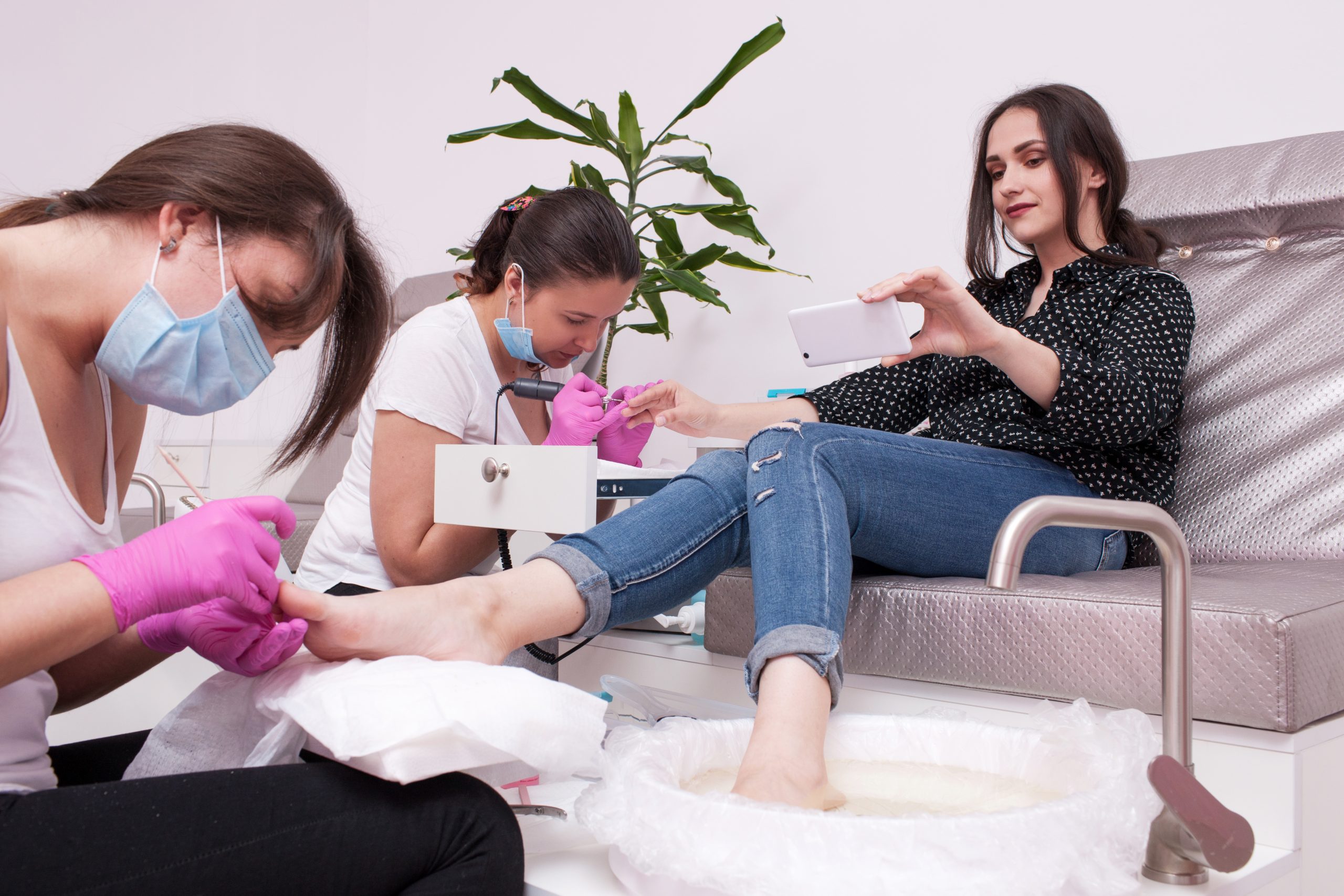
Boosting Confidence and a Professional Appearance: The Secret Power of Pedicures and Manicures
Pedicures and manicures are not just beauty treatments—they are silent yet powerful tools for boosting confidence and improving professional appearance. In today’s world, where first impressions matter, clean and well-groomed hands and feet put you one step ahead.
Well-groomed nails are not just a fashion statement; they reflect personal care, neatness, and health awareness. Keeping your nails clean and well-groomed shows you are self-aware, making you feel confident in your personal and professional life.
When your nails are clean, polished, and well-groomed, you feel more organized and prepared. This confidence also shows in your behavior, whether a handshake, typing on a keyboard, or hand gestures during a conversation. Clean and well-groomed nails send a subtle message of professionalism and reliability.
Regular pedicures and manicures can be part of a professional routine, especially for those who work in client-facing roles or have to present in public. Your neat appearance tells others you understand your importance and respect your work. It’s a small act of care that has significant consequences.
Pedicures and manicures are also ways to express your individuality. Whether it’s nail art, color choice, or nail shape, you can express your creativity and style in everything. Suppose you want your nails to become a silent statement of your personality and brand. In that case, you can choose a classic nude shade or express yourself with a bold, trendy design.
The psychological benefits are no less. Confidence about your appearance increases your willingness to participate in social and professional situations. Anxiety decreases, mood improves, and productivity improves. This mental shift comes from the moment you take care of yourself, which is the core philosophy of pedicures and manicures.
Choosing The Right Salon for Pedicure and Manicure
How valuable can a pedicure and manicure experience be without the right salon? Choosing a salon is as important as caring for your nails and skin. Because the salon’s cleanliness, skill, and professionalism directly impact the quality, safety, and results of your experience, finding a good salon is crucial to your health and satisfaction.
Cleanliness: An Uncompromising Condition
The first thing to look at is how hygienic the salon is. A reputable salon disinfects its kits after each use, uses disposables, and keeps everything clean. Be careful if you see dirty towels, stained nail files, or a messy salon area; this could be a big red flag. The risk of infection is much higher in such an environment.
Skilled and Professional Nail Technicians
The next important thing is the skills and behavior of the technicians. An experienced and trained technician will understand your needs, answer questions, and provide appropriate advice. They also appreciate nail health, can recognize problems, and are skilled in traditional and modern techniques. Don’t hesitate to ask about their certifications or training. Good salons display them with pride.
Scope of Products and Services Used
Salons that use high-quality, toxin-free, and cruelty-free products show their commitment to clients’ well-being and environmental awareness. Additional services such as gel polish, nail art, therapeutic massage, etc., enhance the experience.
Reviews and Recommendations
You can get valuable insights into a salon by looking at customer reviews on Google, Yelp, or social media. Pay special attention to comments about cleanliness, staff special attention to comments about cleanliness, staff behavior, and overall satisfaction. You can visit the salon in advance or book a consultation to verify their professionalism.
Location and Cost
Of course, the salon’s location and service charges are important factors. Still, these two factors alone should not be the only ones guiding your decision. Even if you spend a little more, choosing a clean, safe, and efficient salon is a wise investment in your long-term health.
What to Look for In Hygiene Standards: The Key to a Safe and Professional Pedicure-Manicure
What should the hygiene of a pedicure and manicure salon be like? This question is not just a curiosity but is directly related to your health and safety. Hygiene is not just a trendy word in the nail care industry; it is an essential principle that builds the foundation of professionalism and client well-being. A salon that follows strict sanitation protocols protects you from infections, allergic reactions, and other health risks.
Keeping Equipment Sterile: The Most Important Step
Clean the salon and sterilize reusable equipment (such as nail clippers, cuticle pushers, etc.) using an autoclave or chemical sterilizer. This destroys bacteria, viruses, and fungi. After use, you should immediately dispose of items such as nail files, buffers, and toe separators.
Environmental Cleanliness and Management
Salon work tables and common areas should be sparkling clean and tidy. Pay attention: Did they disinfect chairs? Is the counter clean? Are there dust or stains on the floor? These are all signs of how vital the salon is to Hygiene. Technicians washing their hands before each client and wearing gloves when necessary are signs of Hygiene.
Foot Bath and Waterless Technique
Many high-end salons use disposable liners for foot baths or follow waterless pedicure techniques to reduce the risk of infection further. These methods are safe and environmentally friendly.
Air Circulation and Ventilation
Proper ventilation ensures a safe environment in a salon. Windows, exhaust fans, or air purifiers are essential to reduce the odors emitted by nail polish or acrylic chemicals. This is important for the client’s comfort and to protect the technician’s health.
Product Quality and Preservation
You must store products such as nail polish, lotion, or oil correctly and within expiration dates. Expired or contaminated products pose a risk of skin irritation, infection, or allergies. If a product’s color, smell, or texture seems unusual, it’s best not to use it.
Personal Hygiene and Behavior of Employees
Technicians’ cleanliness is essential, as is not dipping into the same product repeatedly and not touching the client’s skin with unclean hands. These behaviors are signs of professionalism, and professional workers are conscientious about them.

Reviews, ratings, and recommendations: Make Informed Decisions for Safe and Satisfying Nail Care
No matter how good the pedicure and manicure are, a poor salon experience can ruin the entire process. One of the most effective ways to choose the right salon in today’s digital age is to follow genuine customer reviews, reliable ratings, and recommendations from acquaintances. This information will give you a better experience and keep you away from health risks.
Online Reviews: A Mirror of Real Experience
Customer reviews on platforms like Google, Yelp, Facebook, or Instagram can tell you much about a salon. For example, what kind of hygiene do they maintain there? How do the technicians behave? What is the quality of service? Is the pricing transparent? What is the environment like? You can find all this vital information in advance.
Positive reviews typically mention punctuality, quality of service, and cleanliness, all essential signs of a good salon. On the other hand, complaints about repeated infections, rushed work, or poor treatment are a big red flag.
Rating: Indication of Overall Quality
Ratings quickly give you an idea, but you should combine them with detailed reviews. Suppose a salon has a good average rating and a lot of reviews. In that case, it generally provides quality services. However, it is essential to read recent reviews, as the quality of service can change over time.
Personal recommendations: The Most Reliable Source
Recommendations from friends, family, or colleagues carry much weight because they speak from firsthand experience. Sometimes you can find small or new salons with no significant online presence but excellent customer service.
Perception Through Social Media
Checking out salons’ Facebook or Instagram pages gives you a sense of their professionalism, style, and quality of work. Many share photos of their work, offers, and client feedback, giving you an idea in advance.
Verify Yourself
In addition to online information, your observations are also important. You can call or visit the salon to ask questions about its services and hygiene practices. Salons willing to openly disclose this are usually confident in their standards and customer safety.
Diy Pedicure and Manicure: Self-Care at Home
What is a pedicure and manicure? Answering this question can help you create a self-reliant and comfortable beauty practice. Doing this beauty routine at home is perfect for those who want privacy, time savings, or cost savings. With the right equipment, products, and step-by-step instructions, you can achieve salon-quality results.
Preparation: The First Step To Success
First, gather the necessary tools: nail clippers, nail file, cuticle pusher, buffer, good-quality nail polish set, moisturizer, exfoliating scrub, and a hand and foot soaking basin. It is essential to clean and disinfect all equipment before starting; otherwise, there is a risk of infection.
Soaking and Cuticle Care
Soak your hands and feet in warm water with Epsom salts or a mild soap for 5-10 minutes. This will soften the skin and nails and make pushing back cuts and cuticles easier. Then gently push back the cuticle with a cuticle stick and trim away the excess skin. However, avoid overcutting, as there is a risk of infection.
Nail Cutting and Shaping
Cut your nails to the desired length with nail clippers and shape them nicely with a nail file. Smooth the surface of your nails with a buffer so that the polish will adhere easily. For feet, use a pumice stone or foot file to scrub and smooth the heels and rough skin areas.
Moisturizing and Massage
Massage your skin and nails thoroughly with moisturizer or oil. This will keep your skin hydrated and increase blood circulation, which is beneficial and relaxing.
Applying Nail Polish
After cleaning your nails, apply a base coat, two coats of your favorite color, and a top coat. This will make your nail polish last longer and look shiny.
Maintaining Safety and Cleanliness
DIY care is as comfortable as it is conscious. Always keep equipment sterile, be gentle on the skin, and avoid using harsh chemicals. You should go to a professional salon occasionally because sometimes, you may not be able to spot some problems yourself that a professional can.
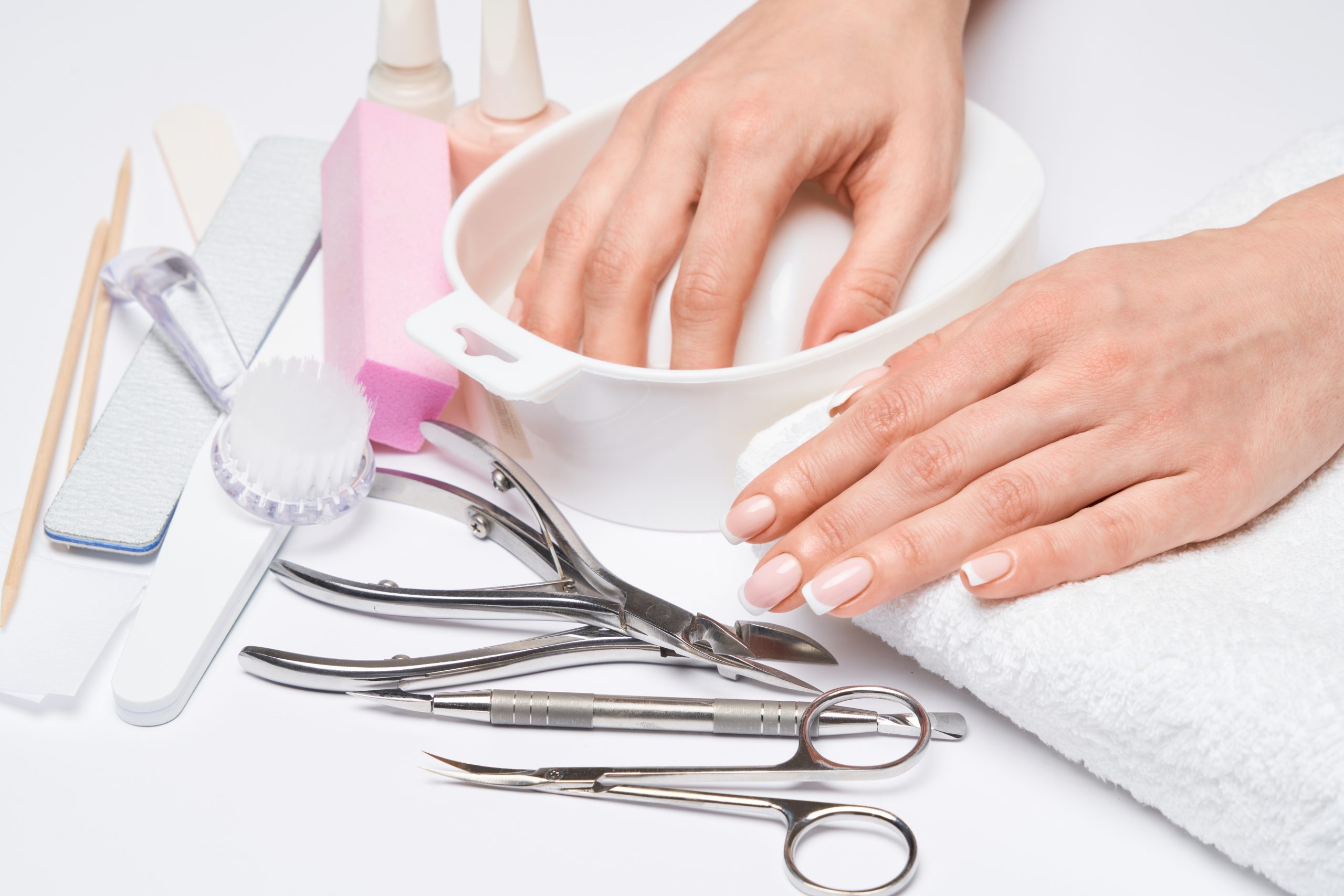
Common Mistakes in Pedicure and Manicure and How to Avoid Them
Suppose you want to know the answer to the question, What is a pedicure and manicure? Knowing the correct procedure is not enough. Knowing what mistakes to avoid is also essential. Whether you go to a salon or do your care at home, if you can avoid these common mistakes, you can protect the beauty and health of your nails and skin.
1. Neglect of Hygiene or Cleanliness
The most common and dangerous mistake is using equipment that is not sterile or going to a salon that does not maintain high standards of cleanliness. This increases the risk of fungal, bacterial, and even viral infections. Always use your tools properly and sterilize or dispose of them. Also, choose a salon that adheres to strict hygiene protocols.
2. Cut The Cuticles
Many people think that cutting cuticles is part of beauty, but this is a big mistake. The cuticle is the natural protective wall of the nail. Cutting it too much can cause pain, bleeding, and infection. Instead, use cuticle cream to soften and gently push back the cuticles, then trim away the excess dead skin.
3. Adding Extra Files or Buffs
Overfiling your nails or incorrectly rubbing them too hard can weaken them, causing them to crack or break. Always work with gentle hands and use a fine-grit nail file. Similarly, overbuffing can thin your nails and cause them to break.
4. Skipping Base Coat and Top Coat
Many people apply nail polish directly, which is a big mistake. The base coat protects the nails from stains and increases their strength, while the top coat retains the color and adds shine. If you skip these two layers, the nail polish will come off easily, and the nails will also look faded.
5. Not Letting It Dry Properly
It can smudge or peel off if you don’t dry your nail polish or gel polish properly after applying it. This is especially true when you leave your nails under a UV or LED lamp for a long time. So be patient and let each layer dry thoroughly.
6. Not Moisturizing
If you don’t hydrate your skin after a pedicure or manicure, your hands and feet will dry and crack. Using hand and foot cream regularly will keep your skin soft and smooth. Products containing vitamin E or shea butter are most effective.
Check Out More Beauty and Makeup Articles Here
Final Thoughts: What Is a Pedicure and Manicure?
What is a pedicure and manicure? Understanding the answer to this question will help you know that these treatments are not just for external beauty, but are a complete path to health, cleanliness, self-care, and confidence. Whether you go to a professional salon or follow a DIY method at home, regular pedicures and manicures significantly contribute to the health of your nails, skin softness, and overall well-being.
In this discussion, we discussed each step, the equipment and products used, and the many benefits of pedicures and manicures, such as improving circulation, preventing infections, boosting confidence, and creating a professional appearance. Moreover, it highlighted the importance of choosing a salon that prioritizes cleanliness and safety so your experience is pleasant and safe.
Avoiding common mistakes, maintaining proper care habits, and being aware of nail health will help you get the most out of your pedicure and manicure. These practices are a part of beauty and a way to protect your body and mind.
In today’s world, where self-care often takes a backseat, taking care of your nails is a simple yet powerful way to honor and empower yourself. So whenever you wonder, “What is a pedicure and manicure? ” remember that they are rituals that combine beauty, health, and comfort.

